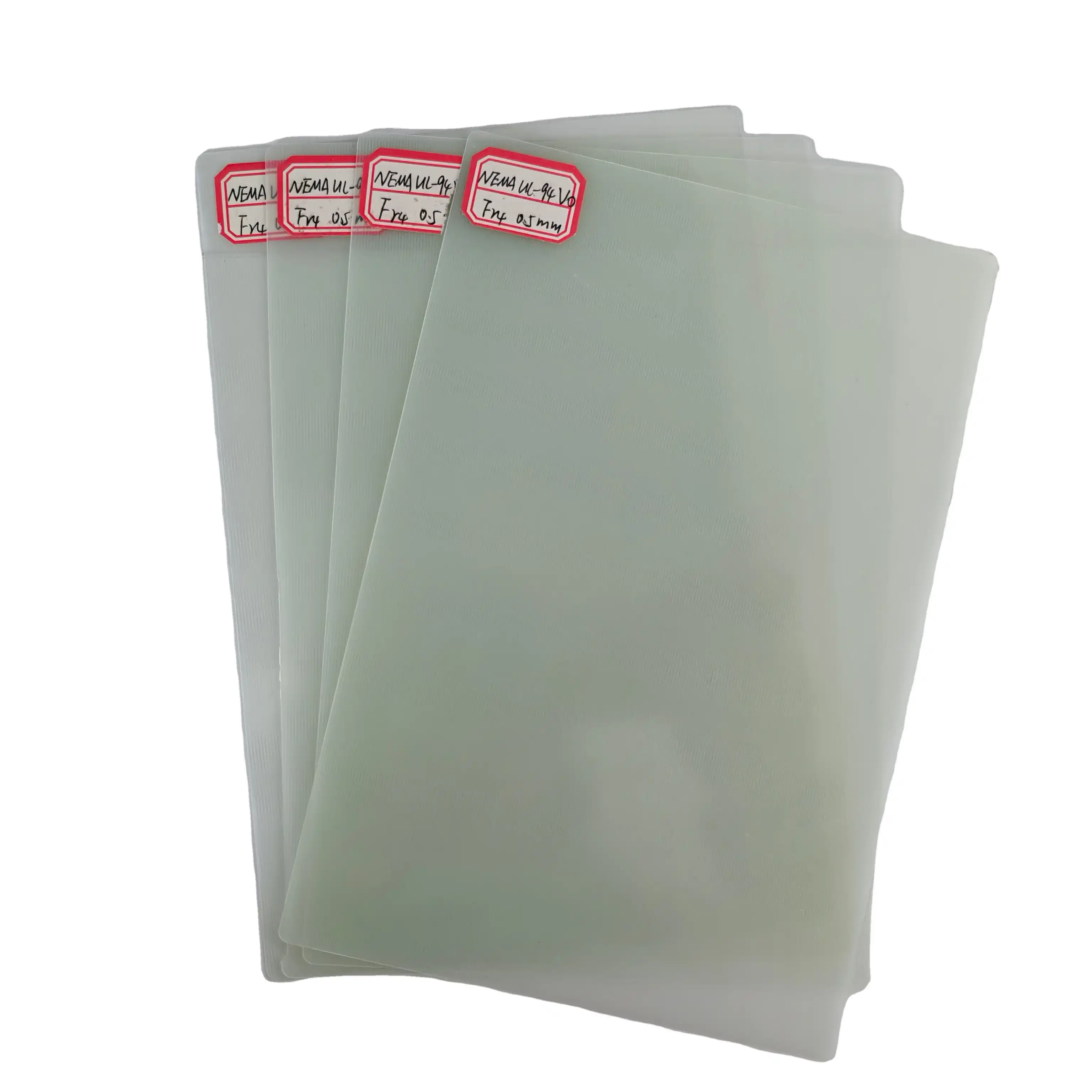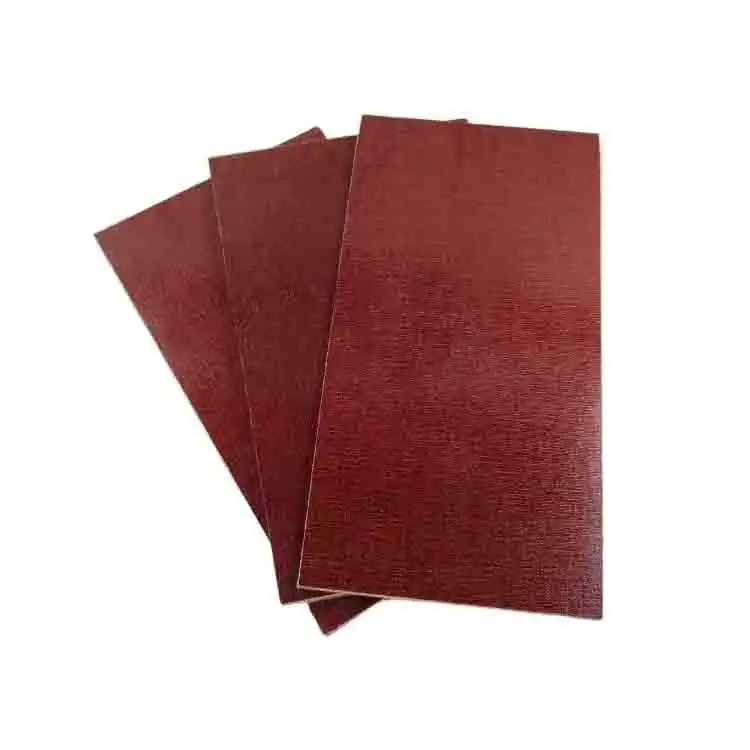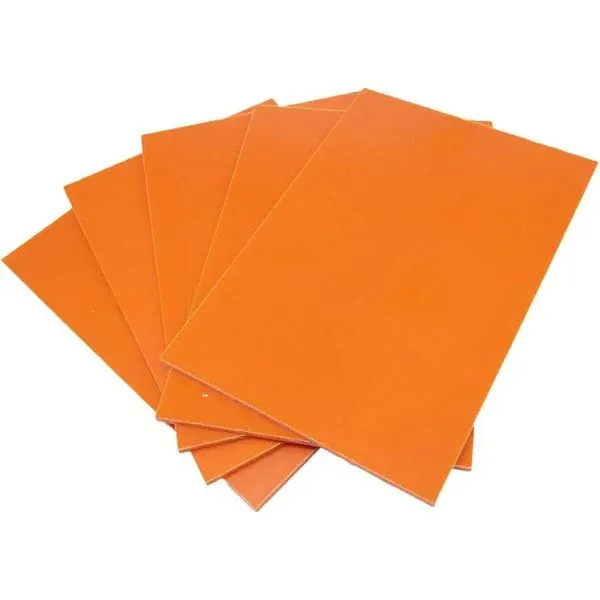Can NEMA Grade L Phenolic Cotton Board be Used in High-Humidity Environments?
2025-03-27 16:59:53
NEMA Grade L phenolic cotton board can indeed be used in high-humidity environments, but with certain considerations. This versatile material, known for its excellent electrical insulation properties, exhibits good moisture resistance. However, prolonged exposure to high humidity may affect its performance over time. While Grade L offers better moisture resistance compared to other grades, it's crucial to implement proper design measures and protective coatings for optimal longevity in humid conditions. Regular maintenance and inspection are recommended to ensure the board's integrity. For critical applications in consistently high-humidity environments, consulting with material specialists or considering alternative materials specifically designed for extreme moisture exposure may be advisable.
Understanding NEMA Grade L Phenolic Cotton Board
Composition and Manufacturing Process
NEMA Grade L phenolic cotton board is a composite material crafted through a meticulous manufacturing process. The core components include cotton fibers and phenolic resin. The production begins with the careful selection of high-quality cotton fibers, which are then impregnated with phenolic resin. This mixture undergoes a controlled curing process under heat and pressure, resulting in a dense, uniform board with exceptional electrical and mechanical properties.
The phenolic resin acts as a binding agent, encapsulating the cotton fibers and creating a robust matrix. This synergistic combination of organic and synthetic materials contributes to the board's unique characteristics. The curing process is critical, as it determines the final properties of the board, including its moisture resistance and dimensional stability.
Physical and Chemical Properties
NEMA Grade L phenolic cotton board boasts an impressive array of physical and chemical properties that make it suitable for various applications. Its most notable attributes include:
- High dielectric strength, ensuring excellent electrical insulation
- Low moisture absorption, contributing to its suitability for humid environments
- Good mechanical strength and dimensional stability
- Resistance to heat distortion and flame retardancy
- Excellent machinability, allowing for precise cutting and shaping
The board's chemical resistance is particularly noteworthy, as it can withstand exposure to various oils, solvents, and mild acids without significant degradation. This chemical inertness contributes to its durability in diverse industrial settings.
Applications and Industries
The versatility of NEMA Grade L phenolic cotton board has led to its widespread adoption across numerous industries. Some key applications include:
- Electrical switchgear and panel boards
- Transformer and motor insulation
- High-voltage bushings and insulators
- Industrial machinery components
- Automotive parts, particularly in electrical systems
In the aerospace industry, this material finds use in aircraft electrical systems due to its lightweight nature and reliable insulation properties. The marine sector also benefits from its moisture-resistant qualities, employing it in various shipboard electrical applications.
Behavior of NEMA Grade L Phenolic Cotton Board in High-Humidity Environments
Moisture Absorption Characteristics
NEMA Grade L phenolic cotton board exhibits relatively low moisture absorption compared to other insulating materials. This characteristic is attributed to the hydrophobic nature of the phenolic resin and the tightly bound structure of the composite. When exposed to humid conditions, the board may absorb a small amount of moisture, primarily through its edges and surface.
The rate and extent of moisture absorption depend on several factors, including the ambient temperature, relative humidity, and exposure duration. Typically, the moisture content reaches an equilibrium state after a certain period, beyond which further absorption is minimal. This equilibrium moisture content is generally low enough to maintain the board's essential properties in most applications.
Impact on Electrical Properties
Moisture absorption can influence the electrical properties of NEMA Grade L phenolic cotton board, albeit to a lesser extent than many other insulating materials. The primary effects include:
- Slight decrease in dielectric strength
- Marginal increase in dielectric constant
- Potential increase in dissipation factor
These changes are usually within acceptable limits for most applications, especially when proper design considerations are implemented. However, in extremely high-humidity environments or when subjected to condensation, the electrical performance may be more significantly affected, necessitating additional protective measures.
Dimensional Stability and Mechanical Properties
High humidity can impact the dimensional stability and mechanical properties of NEMA Grade L phenolic cotton board, though these effects are generally minimal due to the material's inherent resistance to moisture. Potential changes include:
- Slight swelling, particularly along the edges
- Minor reduction in flexural and tensile strength
- Possible decrease in hardness and impact resistance
The extent of these changes depends on the severity and duration of moisture exposure. In most cases, the alterations are reversible once the material is returned to a lower humidity environment and allowed to dry. However, repeated cycles of moisture absorption and desorption may lead to cumulative effects over time, potentially affecting the board's long-term performance.

Best Practices for Using NEMA Grade L Phenolic Cotton Board in High-Humidity Environments
Design Considerations
When incorporating NEMA Grade L phenolic cotton board in high-humidity applications, careful design considerations are crucial to maximize its performance and longevity. Key aspects to consider include:
- Edge sealing: Applying protective coatings or sealants to the edges of the board can significantly reduce moisture ingress.
- Ventilation: Designing systems with adequate airflow can help prevent moisture accumulation on the board's surface.
- Thickness optimization: Using thicker boards or laminating multiple layers can enhance moisture resistance.
- Surface treatment: Applying hydrophobic coatings or treatments can improve the board's surface resistance to moisture.
Additionally, incorporating design features that minimize direct contact with water or condensation, such as drip shields or sloped surfaces, can further protect the board from excessive moisture exposure.
Protective Measures and Coatings
Implementing protective measures and coatings can significantly enhance the moisture resistance of NEMA Grade L phenolic cotton board in high-humidity environments. Effective strategies include:
- Conformal coatings: Applying thin, protective polymer films to the board's surface can create an effective moisture barrier.
- Encapsulation: For extreme environments, fully encapsulating the board in moisture-resistant materials may be necessary.
- Moisture-resistant varnishes: Specialized varnishes can provide an additional layer of protection against humidity.
- Desiccants: Incorporating desiccant materials in enclosed systems can help control ambient moisture levels.
The selection of appropriate protective measures should be based on the specific environmental conditions and application requirements. Consulting with material specialists or coating experts can help determine the most suitable protection strategy.
Maintenance and Monitoring
Regular maintenance and monitoring are essential for ensuring the long-term performance of NEMA Grade L phenolic cotton board in high-humidity environments. Key practices include:
- Periodic inspections: Regularly examine the board for signs of moisture damage, such as swelling, discoloration, or surface degradation.
- Moisture content monitoring: Utilize non-destructive moisture meters to assess the board's moisture content periodically.
- Cleaning and drying: Implement proper cleaning procedures and ensure thorough drying if the board is exposed to water or condensation.
- Environmental control: Where possible, implement measures to control ambient humidity levels in the vicinity of the board.
Establishing a comprehensive maintenance schedule and documenting any observed changes can help identify potential issues early and extend the service life of the board. In critical applications, considering periodic replacement or refurbishment of the board may be prudent to maintain optimal performance in challenging humid conditions.
Conclusion
NEMA Grade L phenolic cotton board demonstrates commendable resilience in high-humidity environments, owing to its inherent moisture-resistant properties. While it can be effectively used in such conditions, implementing appropriate design considerations, protective measures, and maintenance practices is crucial for optimal performance. By understanding the material's behavior under humid conditions and taking proactive steps to mitigate potential issues, engineers and designers can harness the full potential of this versatile insulating material, even in challenging environmental settings.
Contact Us
For more information about NEMA Grade L phenolic cotton board and its applications in high-humidity environments, please contact us at info@jhd-material.com. Our team of experts is ready to assist you in selecting the right materials for your specific needs and providing guidance on best practices for implementation.
References
1. Johnson, R. T. (2019). "Electrical Insulation Materials: Properties and Applications in Humid Environments." IEEE Electrical Insulation Magazine, 35(4), 22-29.
2. Smith, A. L., & Brown, K. M. (2020). "Performance Evaluation of NEMA Grade Insulating Materials under Varying Humidity Conditions." Journal of Composite Materials, 54(12), 1675-1689.
3. National Electrical Manufacturers Association. (2018). "NEMA LI 1-2018: Industrial Laminated Thermosetting Products." NEMA Standards Publication.
4. Zhang, Y., & Liu, X. (2021). "Moisture Absorption Characteristics of Phenolic-based Composites: A Comprehensive Review." Composites Part A: Applied Science and Manufacturing, 143, 106231.
5. Hernandez, M. C., et al. (2022). "Long-term Performance of Electrical Insulation Materials in High-Humidity Industrial Environments." IEEE Transactions on Dielectrics and Electrical Insulation, 29(3), 1058-1067.
6. Thompson, E. R. (2020). "Design Strategies for Moisture-Resistant Electrical Systems Using NEMA Grade Insulating Materials." Electrical Engineering Handbook, 5th Edition, CRC Press.







